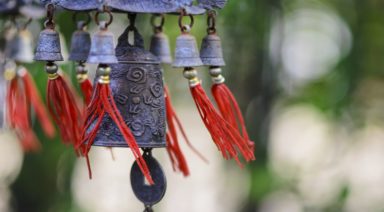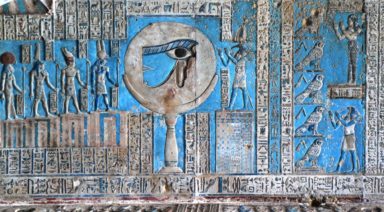Reviewing the mystic and his role in our history

Locked away in a darkened room dimly lit by candles, reading from a book written in an eldritch language, a bearded old man stands in a circle laden with odd symbols as he conjures forces from a dark and unknown realm. This image of a mystic comes to us from Johann Wolfgang von Goethe’s influential classic, Faust. Quite often this Faustian image stirs the imagination when people speak of mystics and their mysteries. However, this picture could not be farther from the truth.
The works of the mystics have always been shrouded in mystery. This is because they sought to push their own level of understanding beyond the restrictions of common knowledge. It is the role of the mystic to discover the limits of human experience and the boundaries of knowledge, and then push beyond these horizons using whatever methods seem appropriate for the situation.
The average person is very comfortable resting in his everyday life, well within the confines of his own known reality. In sharp contrast, the mystic is quite uncomfortable with such restrictions and continuously seeks to reset the boundary between the known and the unknown. It is this very urge that has gotten his kind into trouble time and time again, when their notions clashed with established orders of thought.
Such notable mystics that have clashed with orderly thought include luminaries like as Socrates, Galileo Galilei, William Blake, Isaac Newton, and Emanuel Swedenborg. Today, the works of these men may no longer seem strange and unusual to us because we have grown comfortable with the reality that has been established through their inspirational works. These revolutionary thinkers may no longer conjure the imaginary images of the Faustian mystic, but at one time they did.
To our society, today’s mystics project a far less sinister image. We now call them scientists, philosophers, mathematicians, artists, poets and musicians. All of these people have their own unique way of capturing our attention, stirring our imagination, and pushing the boundaries of what we accept to be truth. Though there is less suspicion cast upon today’s mystics, their alluring power is no less pervasive than that of the mystics of the ancient world. If anything, the mysteries they reveal are the most important mankind has ever discovered to date.
There is no doubt that the wonderful reality we live in comes from the works of mystics of all types and origins. Drawn from the shadows of skepticism and brought into the light of comprehension, mysticism are vital to the continued advancement of humanity. We must understand that there will always be new mysteries of the world, and that we will always have new mystics seeking to illuminate mankind to those wonders just waiting to be discovered.
Who is Sophia in Gnosticism? Goddess of the Divine Feminine

Sophia, the embodiment of divine wisdom in Gnostic tradition, graces us with a profound understanding of the feminine aspect of the cosmos. Gnosticism—interwoven with early Christianity and enriched by Hellenistic philosophy—is more than a religion; it is a journey toward self-realization and communion with a deeper reality. This sacred knowledge, known as Gnosis (from the Greek “to know”), was lovingly passed down through myths found in Gnostic texts such as those discovered in the Nag Hammadi library.
The Myth of Sophia: The Divine Feminine
Let us immerse ourselves in the enchanting myth of Sophia, whose story illuminates the depths of divine wisdom and the sacred feminine.
Sophia’s Origin in the Pleroma
In Gnostic cosmology, Sophia is the radiant feminine personification of divine wisdom and the youngest of the Aeons—emanations of the ultimate reality known as the Monad or Pleroma. Dwelling in the spiritual fullness of the Pleroma, Sophia is intimately connected with the unknowable Father’s brilliance, born of the twin powers of Depth and Silence.
The Descent and Creation of the Material World
Compelled by an intense yearning to know the Father’s essence, Sophia emanates without her consort, creating a disturbance that leads to her descent from the Pleroma. In her fall, she becomes entwined in the material world, inadvertently giving birth to the Demiurge, often called Yaldabaoth. This ignorant and arrogant entity fashions the material universe, unaware of the spiritual realms above. In certain Gnostic scriptures like the Apocryphon of John, the Demiurge is equated with the God of the Old Testament.
Sophia’s descent introduces imperfection, suffering, and ignorance into existence, as the material world is shaped through her unintended actions.




































